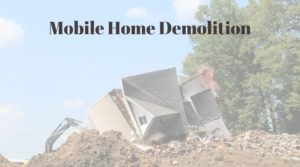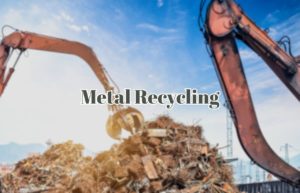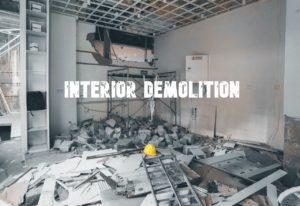Did you know that asbestos-related diseases can do more harm to a person’s health and well-being, compared to a road accident? Each year, the United States sees between 12000 and 15000 deaths due to asbestos in homes and office spaces. Without quick asbestos remediation, you’ll be making yourself and others susceptible to chronic lung conditions like asbestosis, mesothelioma, pleural thickening and lung cancer.
What is asbestos abatement?
In buildings that have been built prior to the year 2000 in the United States, it is highly likely that you will find some amount of asbestos within the construction. If you are tearing down, renovating, refurbishing or building-anew such a property, you’ll need to manage this asbestos carefully with comprehensive asbestos cleaning. That’s because even the slightest disturbance to asbestos-containing items will result in the asbestos fibers contaminating the air. We may end up breathing in these particles. This will result in various illnesses, without the availability of immediate treatment. Asbestos removal will reduce your risk of asbestos-related diseases.
But here’s the thing. Asbestos removal doesn’t necessarily get rid of 100% of the asbestos present in the property. It takes daily care and closely-monitored asbestos management, to successfully protect construction workers, office staff, visitors and residents from asbestos concentrations.
The diverse set of asbestos management and asbestos removal activities that are needed to carefully lower and keep at bay asbestos concentrations is called asbestos abatement. At Benchmark Metal Recovery Group, we are a reputed asbestos abatement contractor with years of experience in asbestos abatement. Contact us today to know how best we can help you.
What factors affect the asbestos abatement process?
What is included in your asbestos abatement process will depend predominantly on what your goal is. To get a plan of action and quote from our asbestos removal contractors, you’ll need to let us know the following details:
- The age of the property.
- Available data on asbestos concentration in the property.
- The property’s asbestos/hazardous material management compliance history.
- Your objective with the property (to tear down, renovate, reconstruct etc.)
- Actual amount of asbestos in the property and the condition it is in (stable/friable).
- How many asbestos-containing locations will be disturbed and how many will remain undisturbed during the construction.
- Your deadline for project completion.
- The people who will be exposed to asbestos during asbestos cleaning.
If any of this information is not available, our abatement contractors will conduct a comprehensive survey to determine what risk level your property is at towards asbestos contamination/illness. They will then suggest a series of action plans for every area of your property, to carefully manage and remove asbestos.
The step-by-step asbestos abatement process
At our asbestos removal company, we implement the following steps for asbestos abatement:
1. Survey
At Benchmark Metal Recovery Group, our asbestos abatement company will start by doing a comprehensive building-wide survey. There is no particular test that we can perform on the building itself to find out if there is asbestos. Instead, we test the air and check its quality to identify any lingering asbestos particulate.
We will identify the sites within the property, where asbestos is concentrated. We will examine this asbestos to determine how close to breakage it is. This will tell you which areas should be addressed on priority and which can be tackled later. We also write up a detailed report about the asbestos hazards in the building, the total amount of work needed, solutions we propose, the cost of asbestos abatement, and anticipated cleaning time.
2. Containing the asbestos concentration
When you are demolishing, constructing or renovating a building, you may accidentally disturb and break up the asbestos concentration. This can release asbestos in the air, which may be inhaled by all the people present, putting them at risk.
So, once we identify the risk areas, we start by implementing containment strategies. The objective is to first find ways to minimize the possibility of asbestos crumbling. Next, we need to close off all ventilation and other HVAC pathways, which may transport the asbestos particles to different areas of the building.
We will also place negative pressure equipment to clean the air of any already-existing asbestos particles and make the air in the building safer and breathable. Any areas that aren’t affected by asbestos will be shielded/covered carefully to make sure the particles don’t coat/stick to them in the event the asbestos starts to break apart.
3. Removing the asbestos from the site
Our asbestos removal contractors start the removal process in locations where you intend to begin active work. For example, if you plan to renovate the building’s lobby first and then move to the kitchen, we will work on the lobby first to help you get back to work quicker.
Benchmark Metal Recovery Group is one of the top asbestos abatement companies in Ohio, reputed for our highly-vigilant team, who are very specialized in safe asbestos removal. We implement a cautious approach, designed to reduce any incidence of asbestos breakage. Our contractors carefully remove the asbestos-containing items and materials. We then place them in specially-designed bags meant for hazardous substances. These bags are then placed and locked separately in another bag/container. This container is then transported to our hazardous waste disposal unit, where it is carefully and sustainably discarded.
Depending on the quantity of asbestos in your property, this removal work can take anywhere between a few days to a few weeks.
4. Decontaminating and sanitizing the building
The next step in the asbestos abatement process is decontamination and sanitization. No matter how careful the removal process, micro concentrations of asbestos particles will still be present in the building. Thorough decontamination and sanitization of the property will ensure the entire area is safe to work and live in.
We use a high-efficiency particulate arresting vacuum (HEPA) to scoop up any asbestos particles from the building’s surfaces. We’ve noticed up to 99.97% efficiency in getting rid of any particulate that is 0.3 micrometers or bigger.
Our abatement contractors perform multiple HEPA vacuuming sessions over the course of a few days to get as much of the residual particulate from the air.
5. Post-removal air quality inspection
The final step in the process is air quality inspection. We will test the air once again in the treated location to make sure there is no asbestos present. At this stage, we will continue to seal-off HVAC access to this region to prevent asbestos in another location from finding its way to the treated site.
Our team will continue to do this for every area in the property that is treated. Once the entire building undergoes asbestos removal, we undertake a thorough and full-building post-removal air quality inspection. This will ensure that the property is safe for you to work and live in.
Wrapping up
If you’re interested in getting your building inspected for asbestos, contact our asbestos removal contractors at Benchmark Metal Recovery Group. We will visit your property and remove the hazardous asbestos concentration carefully so you can return to work in no time.








